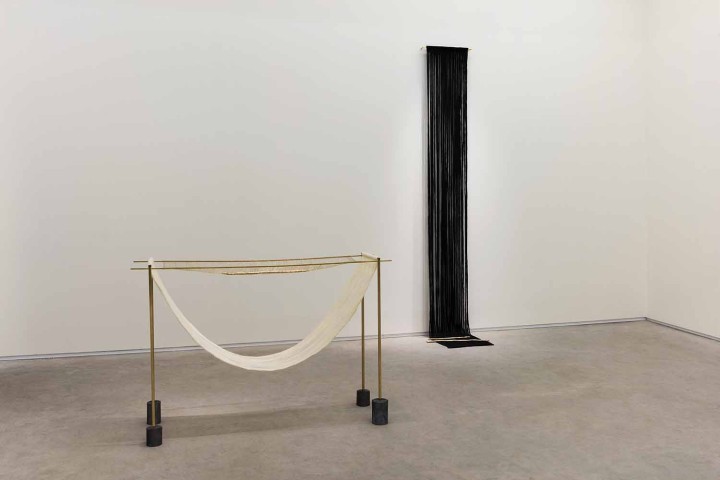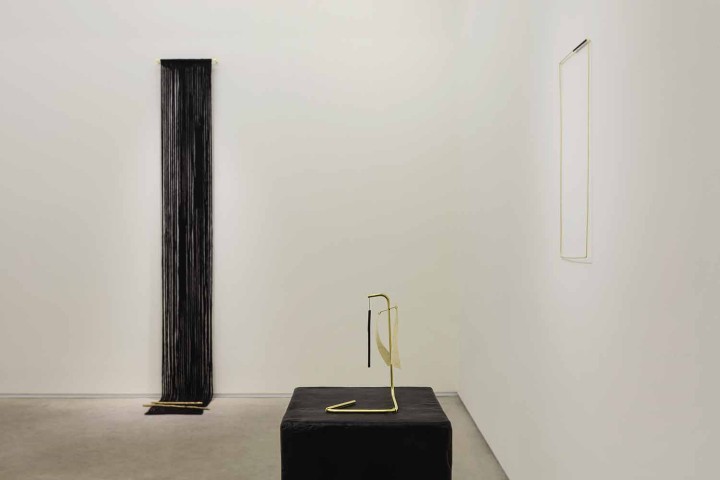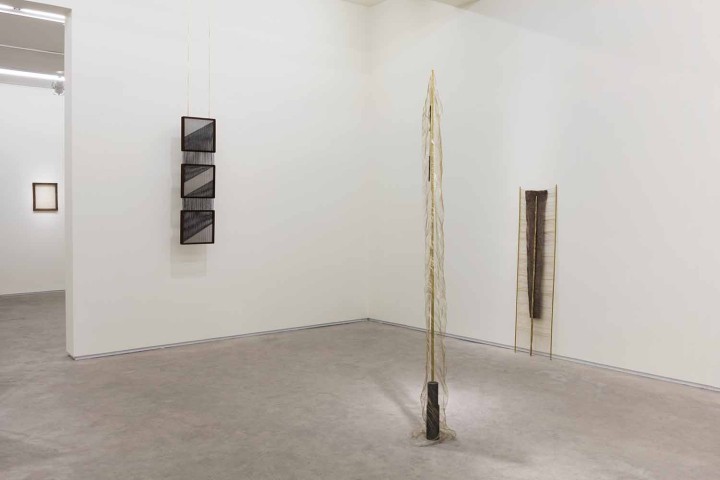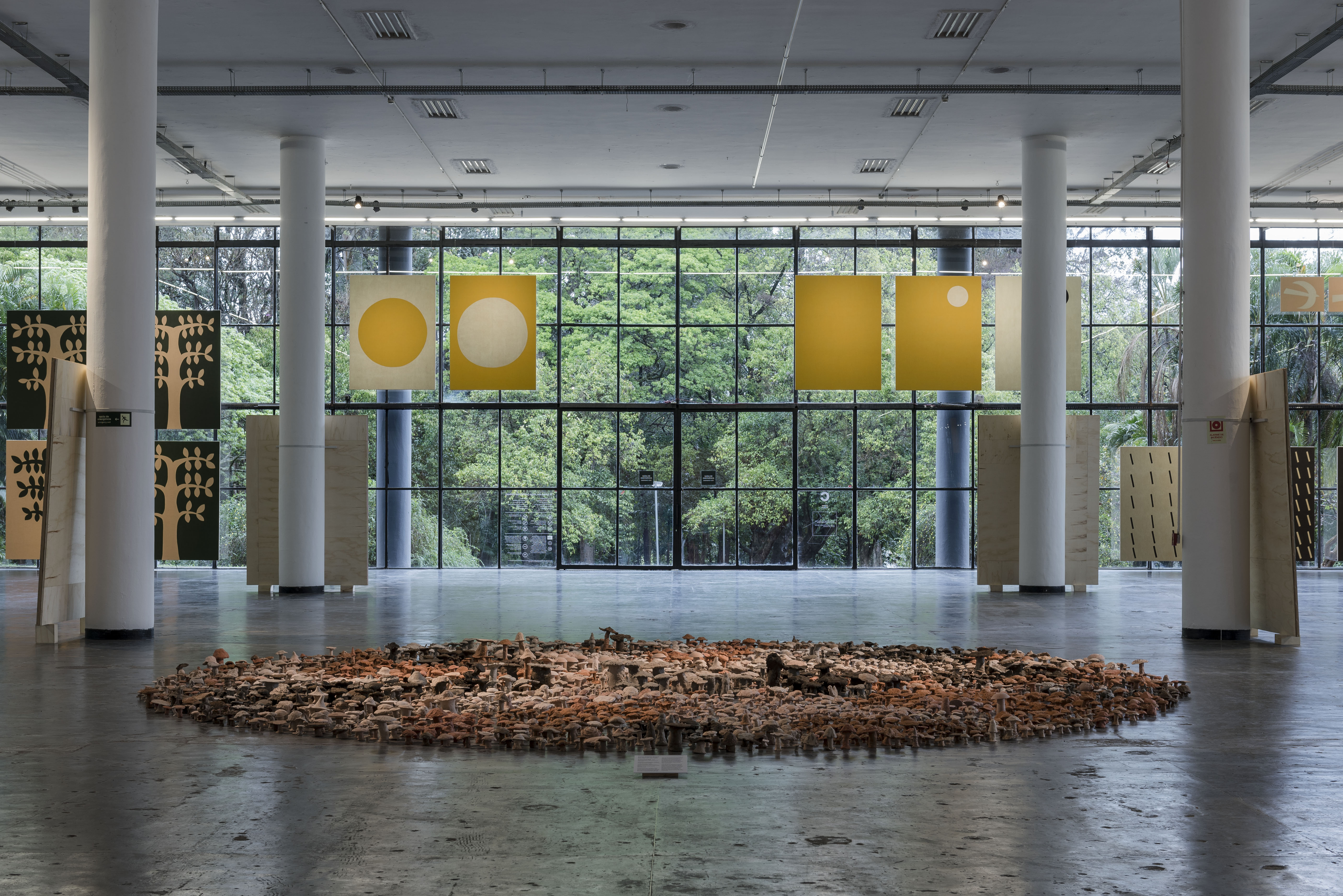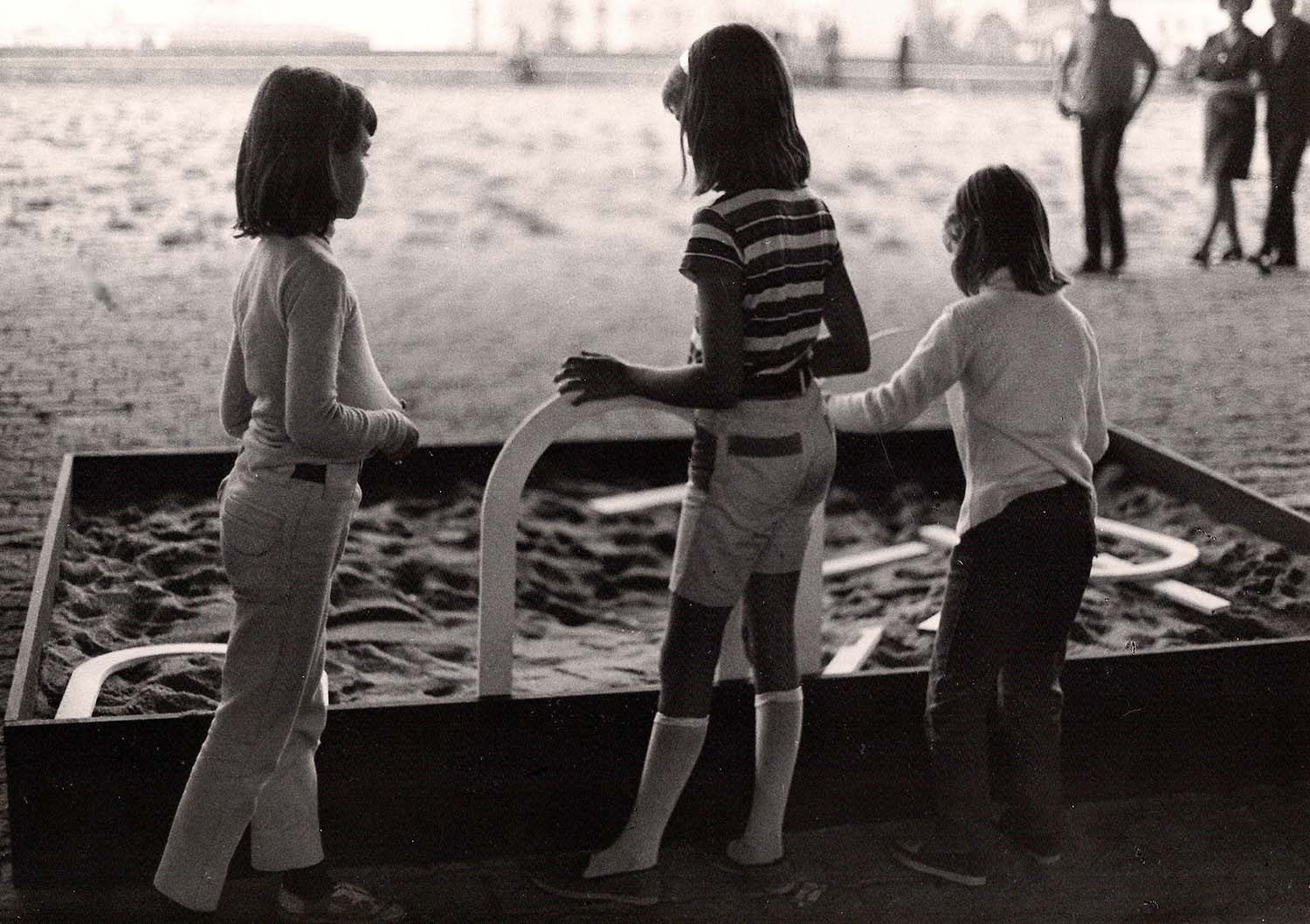In her second solo show at Mendes Wood DM, Paloma Bosquê presents a new set of three-dimensional works that suggests an interesting transition in her practice.
Decisively more sculptural than previous pieces (which mainly connected to walls or hung from the ceiling), this new body of work further articulates her preoccupations with matter, scale, abstraction and the body. Organic elements relate to more geometric forms, suggesting a practice that explores features of the Brazilian Neo-concrete movement as well as post-minimalist strategies.
In every piece there is a strong connection to the idea of craft, handwork and the vernacular, be it in terms of the material or organizational structure employed. In this sense, the viewer experiences these abstract works as indexes of what one might handle with his or her own hands. Their material vocabulary articulates a rich confrontation between organic and inorganic through substances such as brass, bronze, lead, natural fabrics, beeswax, vegetables and carbon. Some pieces manifest subtle echoes of everyday reality; Jirau (2016) refers to the homonymous hanging structure used in northern areas of Brazil.
The artist used the Japanese word Ma as a concept to spatially organize the show. Although it has different meanings depending on context, Ma can mean the experience of space through temporal and subjective elements. In this sense, the apparent show’s density is balanced by a sensitive articulation of intervals and rhythms; which may lead the viewer not to consider each piece in isolation, but rather to attend to the subjective space of spectators and to the experience what is in between these sensible sculptural arrangements and the evocations they embody.

